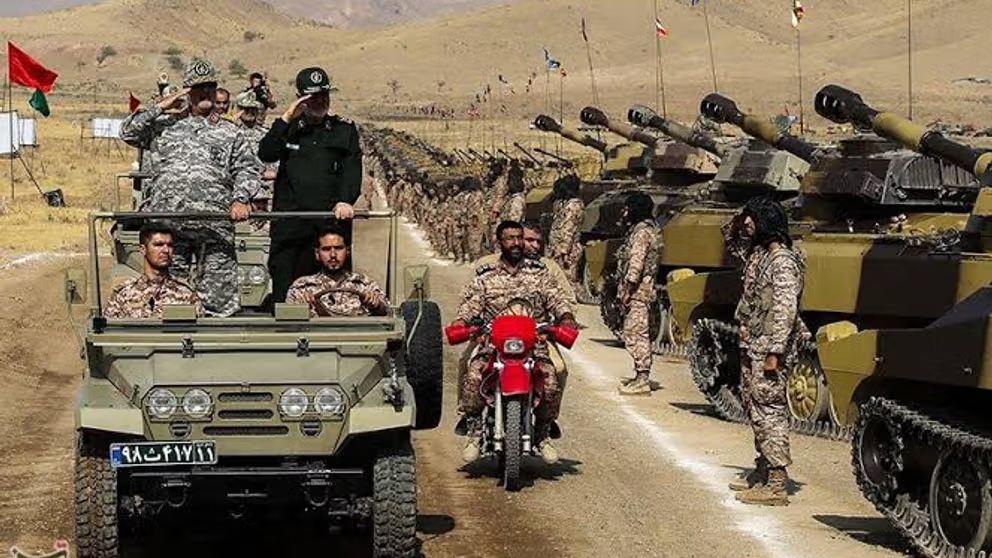Introduction
In recent months, Iran has intensified testing of advanced military systems, including air defense networks, ballistic missiles, drones, and naval assets. These developments underscore Tehran’s commitment to bolstering self-reliance and projecting power regionally, despite crippling U.S.-led sanctions. This article analyzes Iran’s military advancements, their strategic implications, and how they could reshape security dynamics in the Middle East and beyond.
Key Developments in Iran’s Military Arsenal
1. Air Defense Systems: Shielding the Skies
Iran’s domestically developed Bavar-373 air defense system, tested in late 2023, has drawn comparisons to Russia’s S-300. With a reported range of 300 km and capability to detect stealth aircraft, it signifies Iran’s focus on neutralizing aerial threats, particularly from adversaries like Israel. The upgraded Khordad-15 system, which downed a U.S. RQ-4 Global Hawk in 2019, further highlights Iran’s layered defense strategy.
2. Missile Program: Precision and Power
- Ballistic Missiles: The Kheibar Shekan missile, with a 1,450 km range and solid-fuel propulsion, can strike regional targets with high accuracy. Recent tests of the Fattah hypersonic missile (claimed to reach Mach 15) suggest ambitions to challenge existing missile defense systems.
- Cruise Missiles: The Abu Mahdi naval missile (1,000 km range) enhances Iran’s asymmetric warfare capabilities, targeting maritime chokepoints like the Strait of Hormuz.
3. Drones: Exporting Influence
Iran’s drone program has gained global attention, with models like the Shahed-136 (used by Russia in Ukraine) and the Mohajer-6 showcasing strike and reconnaissance capabilities. Local production of the Gaza stealth UAV underscores Tehran’s intent to dominate the drone market, offering cost-effective solutions to allies while circumventing sanctions.
4. Naval and Ground Forces: Asymmetric Tactics
- Warships: The Shahid Mahdavi, a converted cargo ship into a mobile drone/base, and the Dena destroyer (equipped with anti-ship missiles) reflect Iran’s focus on controlling strategic waterways.
- Tanks: The Karrar main battle tank, modeled on Russia’s T-90, and upgraded Zulfiqar tanks aim to modernize Iran’s armored divisions, though their efficacy against regional rivals remains debated.

Drivers of Iran’s Military Expansion
- Sanctions Resilience: U.S. sanctions have forced Iran to prioritize indigenous R&D, yielding 90% domestic production in defense (per Iranian claims).
- Regional Rivalries: Countering Saudi Arabia, Israel, and the U.S. military presence drives Tehran’s investments in long-range missiles and proxy warfare tools.
- Nuclear Deal Fallout: Stalled JCPOA negotiations have incentivized Iran to strengthen conventional deterrence as a bargaining chip.
Regional and Global Implications
- Escalation Risks: Advanced missile/drone capabilities could embolden Iranian proxies (e.g., Hezbollah, Houthis), raising stakes in conflicts from Yemen to Lebanon.
- Arms Race Dynamics: GCC states (Saudi Arabia, UAE) and Israel are likely to accelerate purchases of U.S. missile defense systems (THAAD, Iron Dome) and drone countermeasures.
- Strategic Alliances: Iran’s drone exports to Russia and Venezuela signal its role as a disruptor in the global defense trade, challenging Western non-proliferation efforts.
Future Outlook: What’s Next?
- Hypersonic Ambitions: Success with the Fattah missile could shift regional power balances, forcing adversaries to rethink defense postures.
- Space-Based Surveillance: Iran’s nascent satellite program (e.g., Noor-2) may enhance targeting accuracy for missile systems.
- AI Integration: Tehran’s interest in AI-driven drones and cyber warfare suggests a push for next-gen tech, albeit constrained by limited access to advanced semiconductors.
Conclusion: A New Era of Deterrence
Iran’s military advancements reflect a long-term strategy to offset economic isolation through tactical innovation. While these developments enhance Tehran’s deterrence, they risk exacerbating regional instability, particularly if paired with aggressive posturing. For businesses and investors in the Middle East, understanding this evolving security landscape is critical to navigating risks and opportunities in a volatile region.
ScaleUpPakistan.com Insight
As Iran continues to scale its defense capabilities under sanctions, there are parallels for startups and enterprises: innovation under constraints, leveraging niche technologies, and strategic partnerships. However, the geopolitical fallout underscores the need for agile risk management in an interconnected world.











